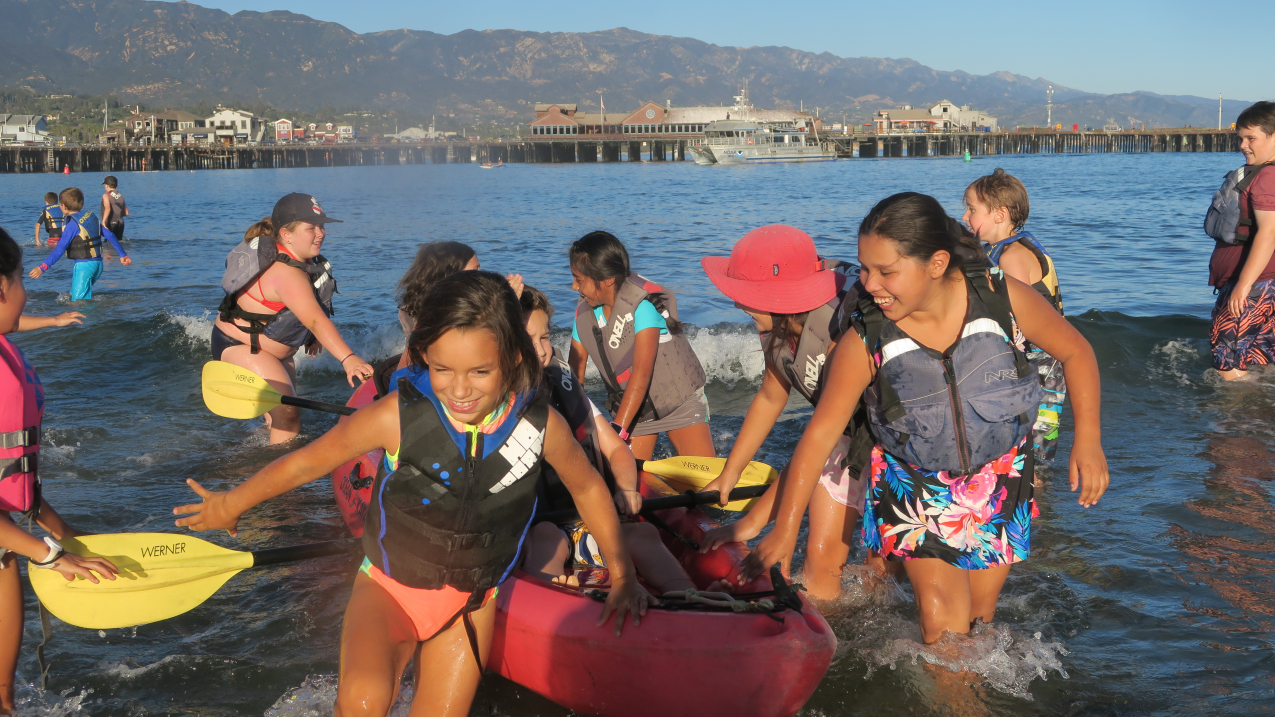First-generation and low-income students are at major disadvantages when it comes to experiencing the outdoors and pursuing ocean conservation careers. The NOAA Office of National Marine Sanctuaries is working to make America’s underwater treasures accessible to youth of all backgrounds. These learning opportunities encourage individuals and communities to be involved in stewardship behaviors and decisions that conserve, restore, and protect our underwater parks. They also prepare a diverse range of students for the workforce.

Elementary school students from an Ocean Guardian School in Santa Barbara, California, participate in a kayaking adventure. (Image credit: Claire Fackler, NOAA Office of National Marine Sanctuaries)
The Ocean Guardian School Program gives students from disadvantaged backgrounds opportunities to learn about the ocean, marine science careers, and stewardship. Starting in 2016, the program began targeting Title I schools to apply and receive funding by building capacity within the school community. Students learn new skills to implement a local stewardship project, giving them ownership of their community environment. This past school year, there were 35 Ocean Guardian Schools, 12 from low-income areas, reaching 6,689 students.
To reach other diverse communities, NOAA sanctuaries provided diversity and inclusion funding for new programs. Through this funding opportunity, more than 100 different activities targeted underserved audiences, reaching 2,942 K-12 students, teachers, and interested parties in Monterey Bay, Greater Farallones, Channel Islands, and Stellwagen Bank National Marine Sanctuaries. In Stellwagen Bank National Marine Sanctuary, this funding supported a new program titled “Whale Ambassador—Every Kid in a Park.” Stellwagen Bank education staff connected with a Title I school in Boston, Massachusetts, for a three-week program that included a visit by the sanctuary’s life-size inflatable whale, a trip to the New England Aquarium, and whale watching in the sanctuary. Staff also collaborated with the Hispanic Access Foundation and worked with the Dominican community in Lawrence, Massachusetts, and a Title I school summer program to raise awareness about the ocean, whales, and NOAA careers, culminating in a whale watch during Latino Conservation Week. Greater Farallones National Marine Sanctuary staff focused on bringing Title I schools in the San Francisco Bay area hands-on ocean science experiences. The programs varied by age and taught topics ranging from good seashore manners to changing ocean chemistry.
In addition, many programs incorporate traditional knowledge. For instance, at the Mokupapapa Discovery Center located in Hilo, Hawaii, the Navigating Change Program, an education and environmental stewardship program that incorporates traditional knowledge with western science to inspire the next generation of conservation leaders, worked with almost 1,682 Native Hawaiian students.
At the graduate level, the Dr. Nancy Foster Scholarship Program builds connections between underrepresented students and the ocean by recognizing outstanding scholarship and encouraging research, particularly by female and minority students. Recent changes to this scholarship program have helped ensure that underrepresented graduate students with the greatest financial need have a better chance of ranking higher in the application process.
Through these programs, sanctuaries are reaching new audiences and supporting communities from all backgrounds. In FY 2017, the National Marine Sanctuary System reached 22,903 underserved youth.
This story was originally published as part of the 2017 NOAA Education Accomplishments Report.



